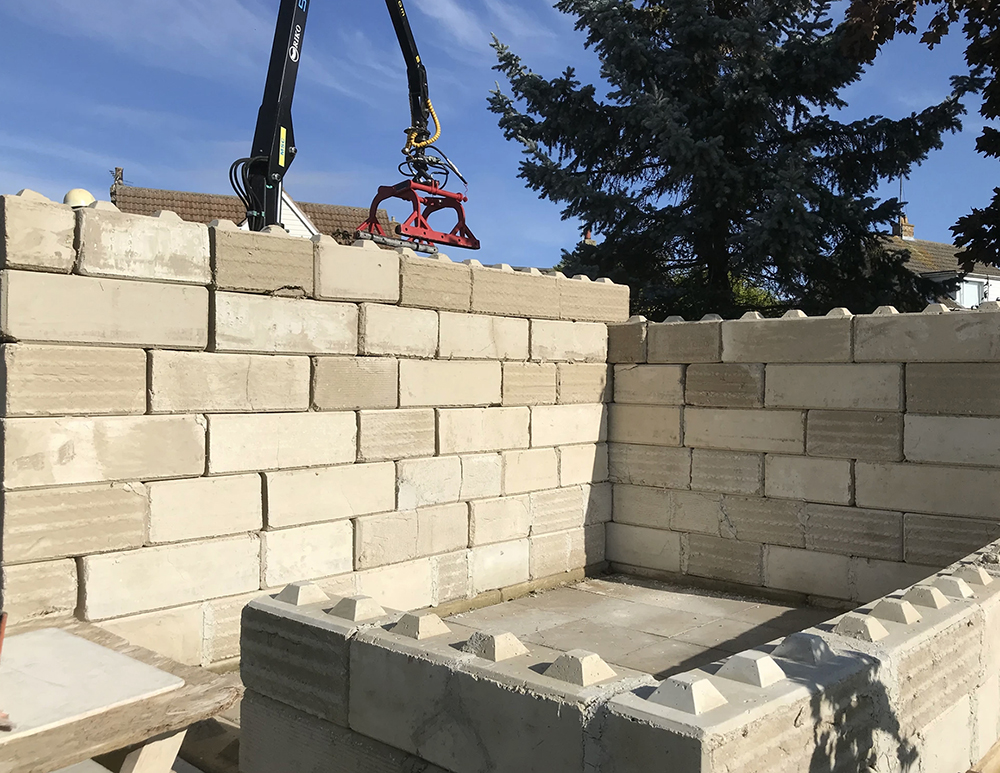We are delighted to introduce BETTABLOK® with our Commitment to Excellence.
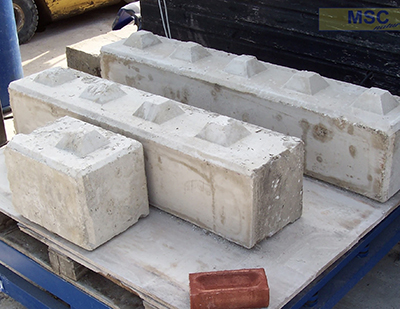 Building with earth is a practice that goes back thousands of years, using clay, cob, mud-brick and rammed earth. The 13th century Great Mosque of Djenne mud-brick structure is stunning and classified as a World Heritage Site. The earth’s thermal mass insulates the building from blinding heat during the daytime, providing absorbed heat to warm the mosque on colder nights.
Building with earth is a practice that goes back thousands of years, using clay, cob, mud-brick and rammed earth. The 13th century Great Mosque of Djenne mud-brick structure is stunning and classified as a World Heritage Site. The earth’s thermal mass insulates the building from blinding heat during the daytime, providing absorbed heat to warm the mosque on colder nights.
Simple but ingenious engineering.
Over the decades though, particularly in western countries, the built environment has opted for concrete over more natural materials. But the tide is turning. With a global focus on the devastating impact of climate change, the construction sector is now legally bound to minimise carbon emissions.
Introducing Bettablok: breathable, low carbon
Bettablok is made of a mix of natural materials: aggregate, fibre, lime, chalk and clay and is a sustainable alternative to cement and concrete. It is the brainchild of Director, Malcolm Carrington, who spent much of his working life in the forestry industry and 30 years repairing and restoring historic buildings.
“It was back in 2012, when I officially retired that I started working on the Bettablok idea. I had already been involved with the East Anglia Regional Telluric Houses Association (Eartha) since the 1990’s, recently becoming chairman, so had a long fascination with earth buildings. The Bettablok brings a modern twist to the age-old concept of building with earth,” explained Malcolm.
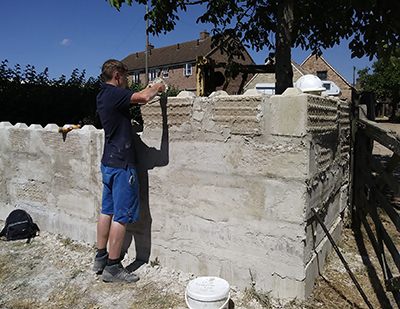 Benefits of Bettablok
Benefits of Bettablok
The patented Bettablok has already been used for extensions for private customers. As Malcolm contends, the most laborious part is removing tonnes of original concrete foundation, as placing the Bettablok is reasonably quick. It is cast and vibrated without heat onto timber cradles, then specialist pallets. During construction, a hydraulic crane is used to place the Bettablok in the walls.
“As a sustainable company, we are mindful of the impact on the local area, and we excavate clay for the next batch of Bettablok from the site. In a future build, steel piling will be used to eliminate cement and concrete.”
The benefits of Bettablok are extensive and include the following:
- 100% naturally and locally resourced
- Minimum carbon footprint- compared to concrete (responsible for 15% of global carbon emissions)
- Zero waste: Bettablok can be crushed & re-formed, or re-used
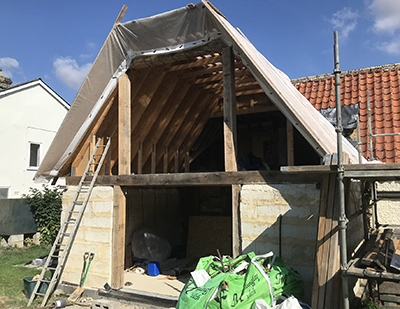 Earth has naturally high thermal mass, thereby keeping buildings cool in summer and warm in winter- no air con needed!
Earth has naturally high thermal mass, thereby keeping buildings cool in summer and warm in winter- no air con needed!- Moisture control: Bettablok absorbs and releases moisture-perfect for humidity regulation
- Innate fire resistance: Bettablok is non-combustible
- Breathability: Bettablok naturally absorbs interior toxins and odours
- Low sound transmission levels
- Aesthetics: Can be finished with a breathable paint and plaster
- Fast construction: machine-led, with no scaffolding required
- One-man operation (reduces labour costs)
- Overall reduced lifecycle cost: low long-term maintenance and reduced energy costs
“Cement-making is responsible for 8% of man-made carbon emissions. The US Government announced earlier this year a huge £6 billion investment to decarbonise the heavy industrial sector, with a large part of that aimed at finding low carbon cement alternatives.
“Bettablok is already on the market as an earth-based patented interlocking building block system and we are looking to partner with larger-scale building projects.”
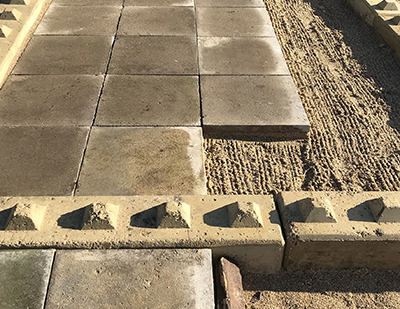 See Bettablok at: Futurebuild 2025
See Bettablok at: Futurebuild 2025
4th-6th March 2025 , ExCeL London
To get in touch with Bettablok, please see the contact details below:
T 01487 840305
M 07436 795028
office@bettablok.com
www.bettablok.com

